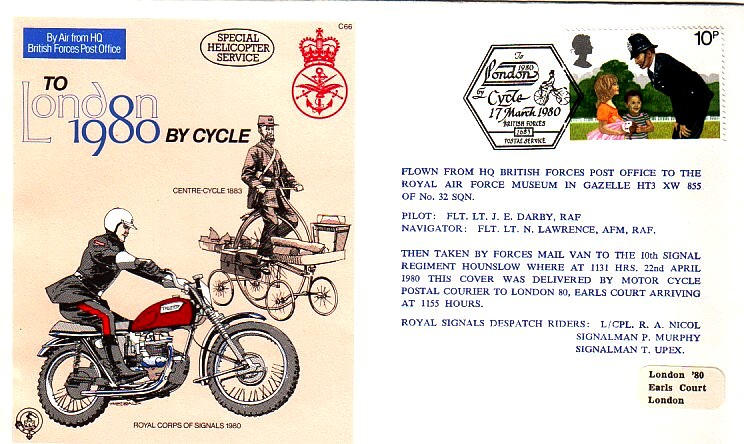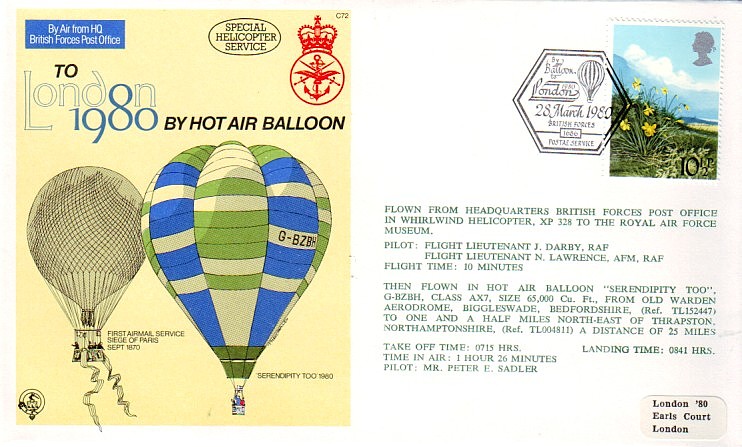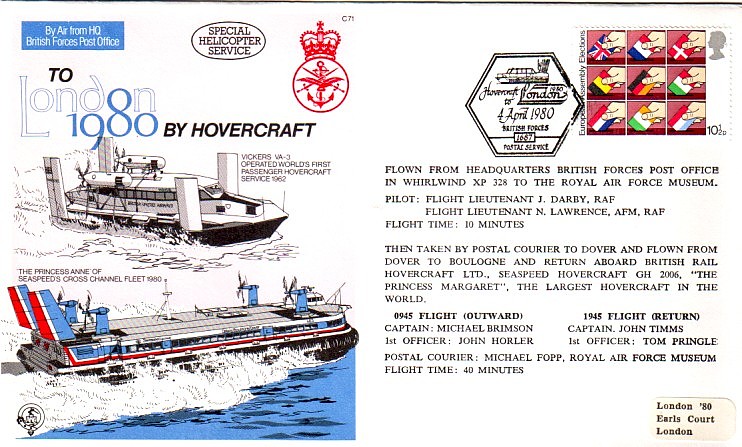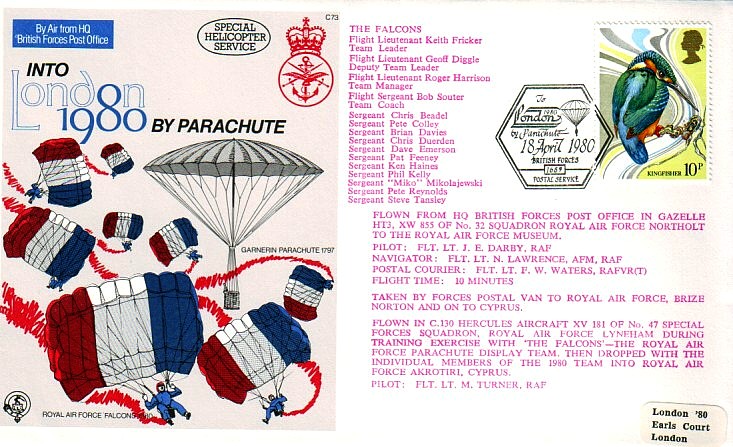London 1980 Stamp Exhibition
Mail for the Armed Services : Postal and Courier Services
The London 1980 Stamp Exhibition also introduced the idea of a miniature sheet of stamps from the British Post Office, and the reason for this was explained on the backing sheet for each of them.
The British Post Office has agreed to help the London 1980 Exhibition by providing means of financial support. The whole of the premium on each sheet (the amount in excess of the face value of the four stamps) will be available to help finance the 1980 Exhibition; any money not required for this purpose will be put into a special fund for philately. The first miniature sheet issued contained the four stamps of the 1978 British Architecture, Historic Buildings set issued on March 1978.So from my calculations each one of this miniature sheet sold would have been a donation of 10p to the fund.
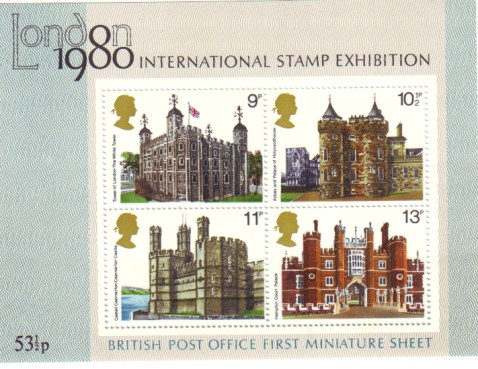
These covers showing the postal and courier services for the Armed Services all have the same insert, but in a different coloured printing. All of this information is copied from this insert, and I have separated the paragraphs with the covers, but in date order, not necessarily fitting in with the text. This Forces mail information was all new to me, and I found it really interesting.
On the 22nd July 1882, Queen Victoria authorised the formation of the Post Office Corps which was formed from the 24th Battalion Middlesex Volunteers for service in the Egyptian and Sudanese campaigns. The Post Office Corps was then followed by a second Army Postal Corps called the Royal Engineers Telegraph Reserve. In 1889 both reserve Corps were re-organised into two supplementary companies to give an efficient Postal and Telegraph Service during the South African War. 1908 saw a further re-organisation of the two reserve companies when they amalgamated into the Royal Engineers (Postal Section) &endash; RE (PS).
As far back as 1799, a need for a Postal Service for the troops in the field was considered to be essential. It was not however, until 1808 during the Peninsular War that the first Army Base Post Office was put into operation. Apart from this first Army Base Post Office and another in 1840, in the first Chinese War, no proper postal service generally available for troops had ever been put into operation.
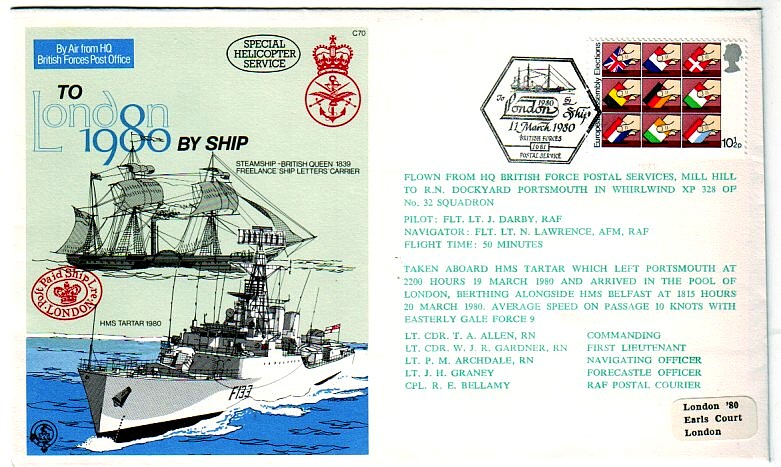
The RE (PS) served during the First World War in France, Belgium, the Dardanelles, Egypt, Palestine, East Africa, Greece, Italy and North Russia. The ingenuity and resourcefulness of RE (PS) personnel was unlimited. As well as by conventional means mail was transported by mule, sleigh, trawler, mine sweeper, in fact any form of transport available at the time.
The Home Postal Depot was formed in 1914 to fulfil two functions. Firstly, it served as a central sorting and distribution point for all forces mails, and secondly, for the training of RE (PS) personnel. From 1918 until 1929 a nucleus of RE (PS) remained in the Army of the Rhine until it was withdrawn in 1929, whilst a detachment also operated in North Russia during the period 1918-19.During 1918 experiments were carried out using modified aircraft for transporting troops mail by air. As the test proved successful the first regular airmail service from Folkestone to Cologne was set up in March 1919 to provide the British troops in Germany with a fast mail service. This was the world’s first scheduled airmail service. Due to the success of the Army airmail service, the system was adopted by civil Post Offices world wide.
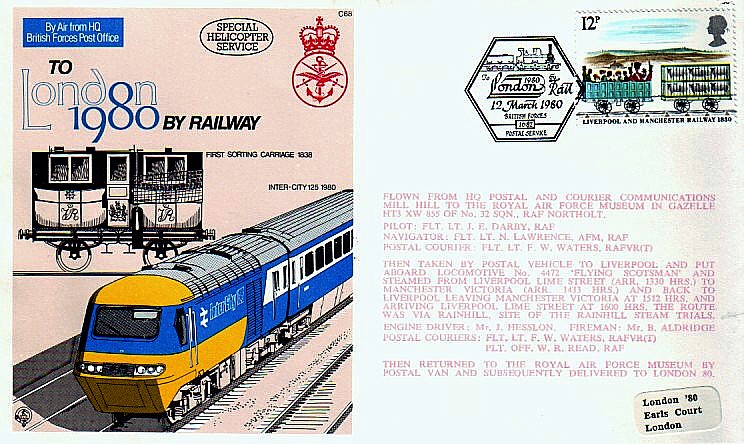
The text on this cover was a very faded ink, and not well struck, so this is the best I could reproduce
The Second World War saw the RE (PS) serving on all fronts worldwide and also detached with forward troops. During that war it was held by a famous Commander, that his troops could march for three or four days without food on the strength of one letter.The RE (PS) personnel landed with the Sixth Airborne Division by parachute and glider during the opening of the second front, and postal personnel were amongst the sea assault troops with the Fifth and Sixth Beach Brigades. Field Post Offices were established on the beach&endash;head within hours of arrival.
17 March 1980
With the inclusion of British troops as part of the United Nations Forces in the Korean War in 1950, RE (PS) played its part in the support role to two British Brigades and with a line of Communications Unit in Japan. In the early fifties the formation of NATO, SHAPE, HQ ALFCE and HQ AAFCE saw the reintroduction of Postal Units in France.
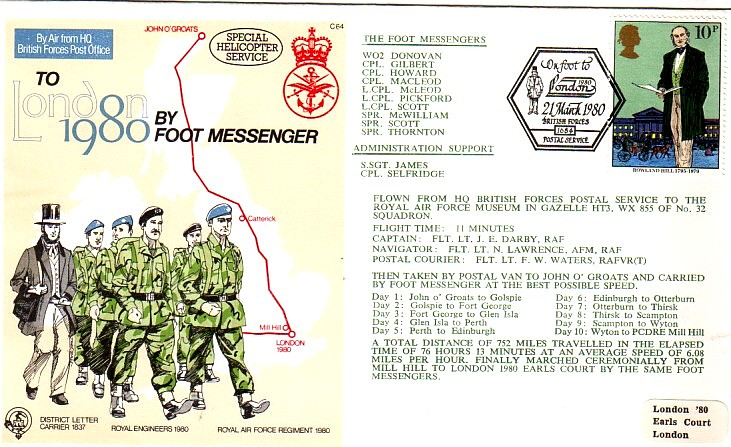
The withdrawal of British troops from Egypt meant the transfer of the Middle East Command to Cyprus and the establishment of units in Aden and Tripoli. It soon became apparent that the RE (PS) provided a higher standard of service than that of their civilian counterparts with the consequent demand from Commands for BFPOs to serve in all overseas Commands.
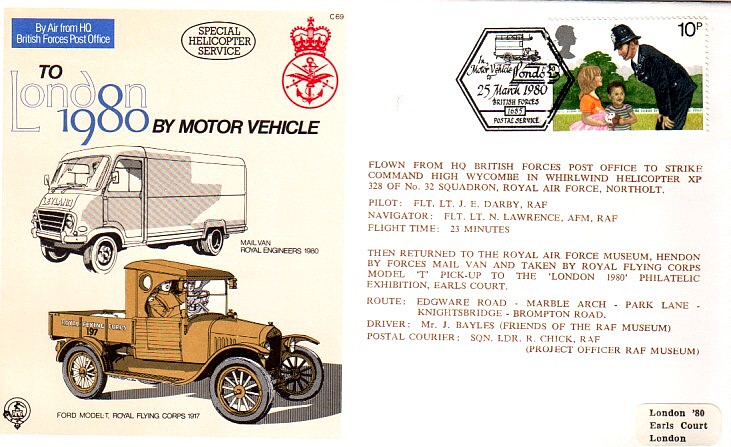
An experiment was tried in 1953 whereby the Army Postal Service undertook the responsibility for the transmission of classified mail in BAOR. By gradual progress the transmission of classified mails worldwide was transferred to the RE (PS), a service which parallels itself in, but separate from, the mail service.
28 March,1980
Following the consolidation of the Service, in the fifties, the RE (PS) by now RE(Postal and Courier communications), became organic to every field formation.
4th April, 1980
In 1962 the Home Postal Depot moved its location from Acton to its present location in Mill Hill and accepted the responsibility of the HM Ships mail from the civil post office, thus the RE (PCC) became a Tri-Service organisation, (having previously accepted responsibility for RAF mails) and an international military service with its units in NATO.
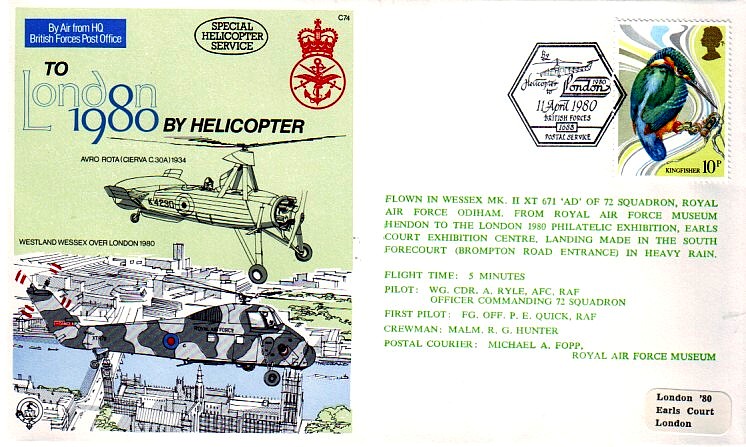
1974 brought the rationalisation of the UK Forces Courier Services and the introduction of Courier Wing within the Home PCC Depot RE. This Wing accepted the transmission of all classified documents carriage within UK in addition to the existing worldwide service.Further reorganisation took place in 1979 to form the Forces Postal and Courier Service into four PC Regiments and the Depot at Mill Hill re-named Postal and Courier Depot RE.
18 April,1980
in 1980 RE (PC) personnel will be found serving in UK, including Northern Ireland, Canada, Belize, Kenya, Brunei, HongKong, Korea, Thailand, Nepal, Cyprus, Italy, Sardinia, Gibraltar, Portugal, Germany, Belgium, Holland and Norway all with the express intention of providing a service par excellence to the members of the three Armed Services.
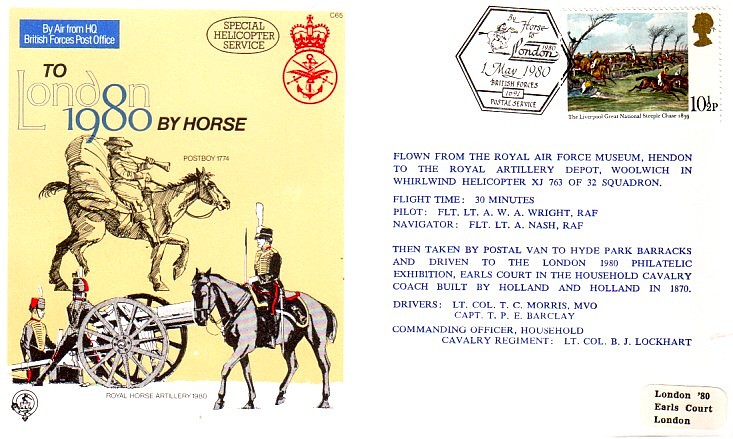
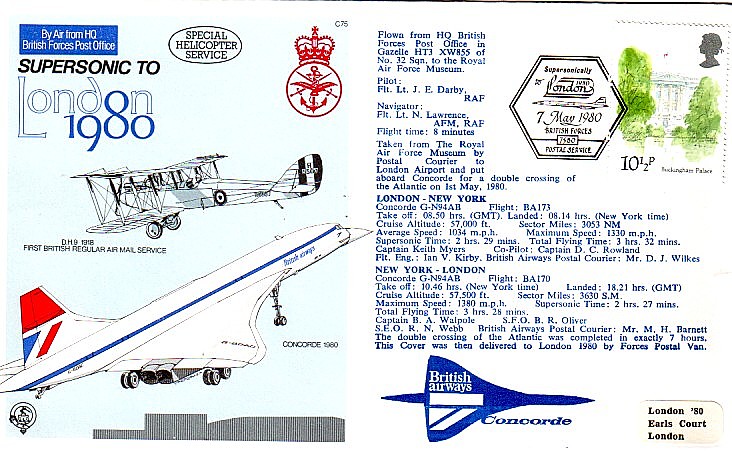
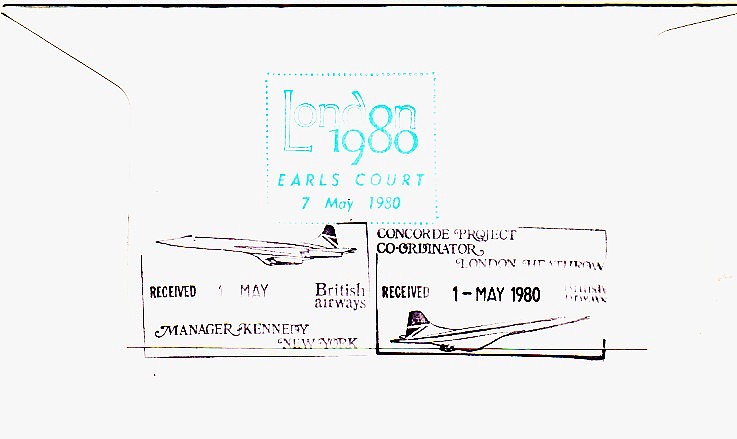 7th May, 1980
7th May, 1980
Because I am a real fan of the Concorde aircraft, I have included this image, which has nothing to do with these covers, but was taken of the final flight, escorted by the Red Arrows, the R.A.F. aerobatics flight team.
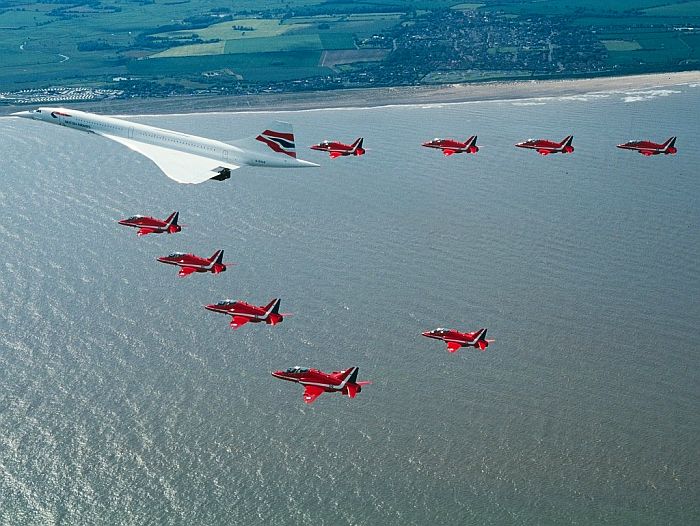
These are the other two miniature sheets issued to help fund the cost of the Stamp Exhibition. The second one was issued 22nd August 1979, and contained the stamps to mark the centenary of the Death of Sir Rowland Hill, and the surcharge was 10p. The third miniature sheet was issued 9th April 1980 and showed the historic buildings in London, the 50p value stamp of that set. The surcharge for this was 25p.
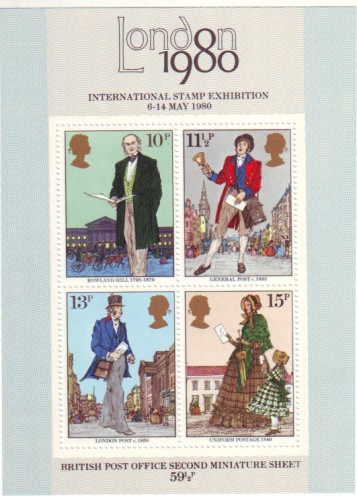
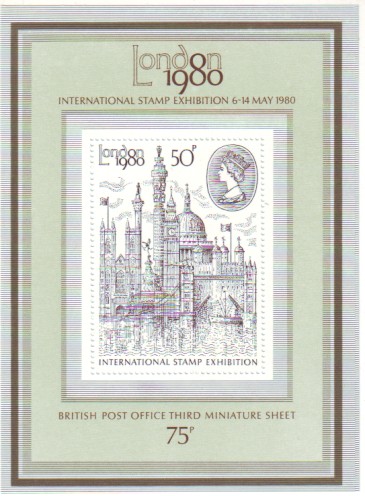
I think that there were 12 in this set of covers, so if any visitor to the site knows of another one, I would be delighted to hear of it.
